A piece of good news came to us that the new 144-hour visa-free entry is introduced in Beijing, Tianjin and Hebei, doubling the previous 72-hour length. It allows air passengers from 53 countries to transit and stay for up to 144 hours (6 days) in Beijing, Tianjin and Hebei without a visa.
Come on and plan your 6-day trip in Beijing.
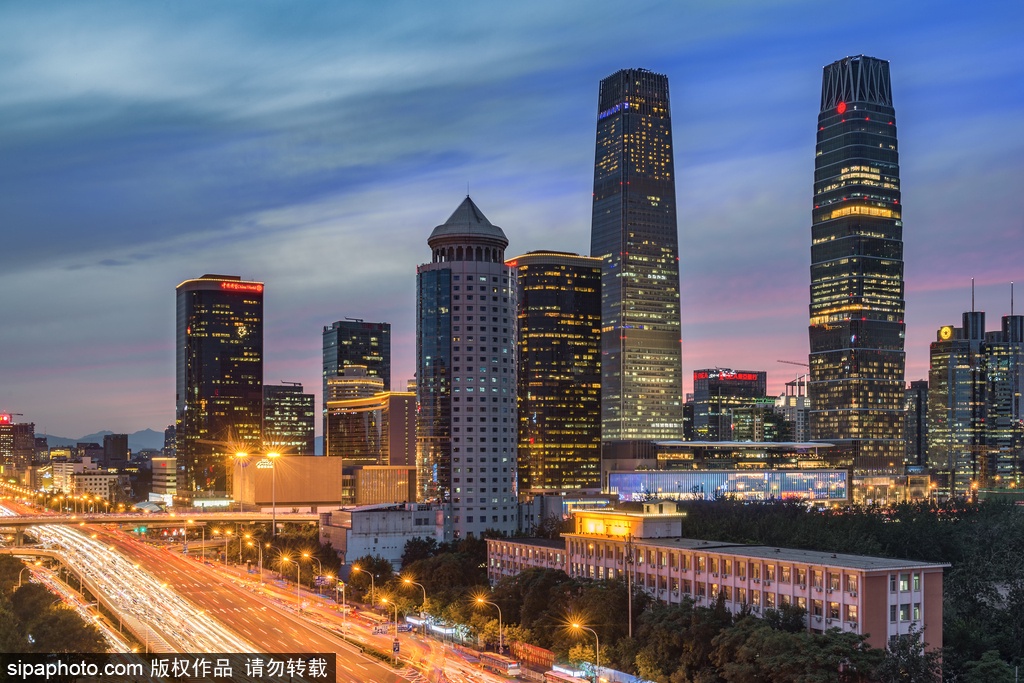
Day 1

The Tian’anmen Square occupies an irreplaceable place in Chinese people’s minds as many important events took place here, including the Founding Ceremony of People’s Republic of China.
Wake up early for the flag-raising ceremony at Tian’anmen Square and you will not regret as you witness this most solemn ceremony.
Click here to check the time of flag-raising ceremony.
https://flag.911cha.com/
The National Museum of China is one of the most popular museums in the world. Covering an area of 200,000 square meters, it is the largest museum based on a single building in the world. It is mainly consisted of 48 exhibition halls displaying over 1 million collections. Most famous relics are collected here.
Nanluoguxiang enjoys a high reputation in China as a hutong. A host of tourists move on the hutong everyday due to palatable snacks and featured shops.
Houhai Lake is the paradise for night owls where many bars and restaurants open for the whole night gatherings.
Day 2
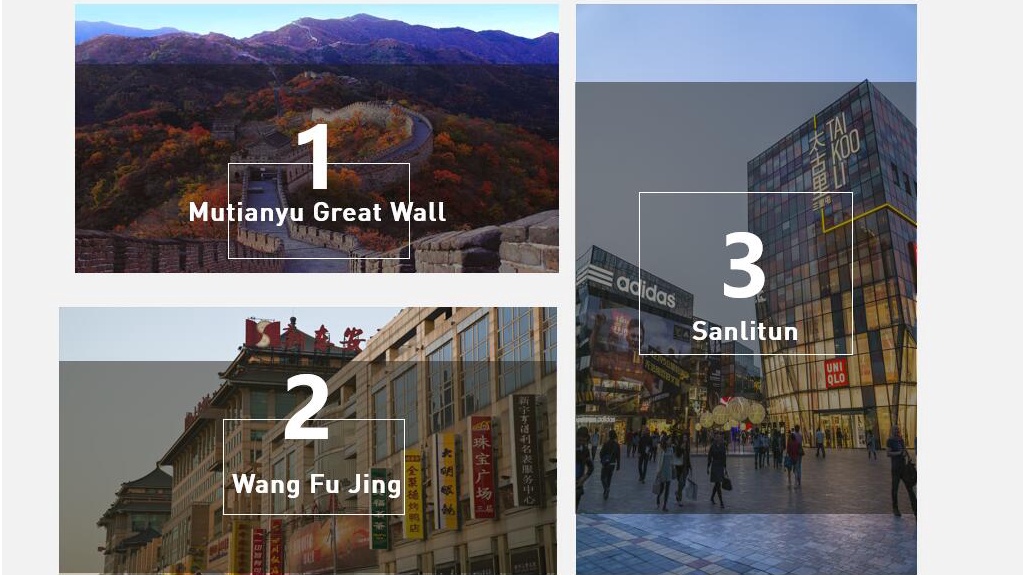
As an old saying goes “One who fails to reach the Great Wall is not a hero”. The Great Wall has impressed many with its grand design. The Mutianyu section of the Great Wall boasts beautiful scenery and a touching history.
Wangfujing is the most well-known shopping street in Beijing where all kinds of wares and products can be found.
Sanlitun is a bustling block famous for its bars. You can see modern Beijing here.
Day 3
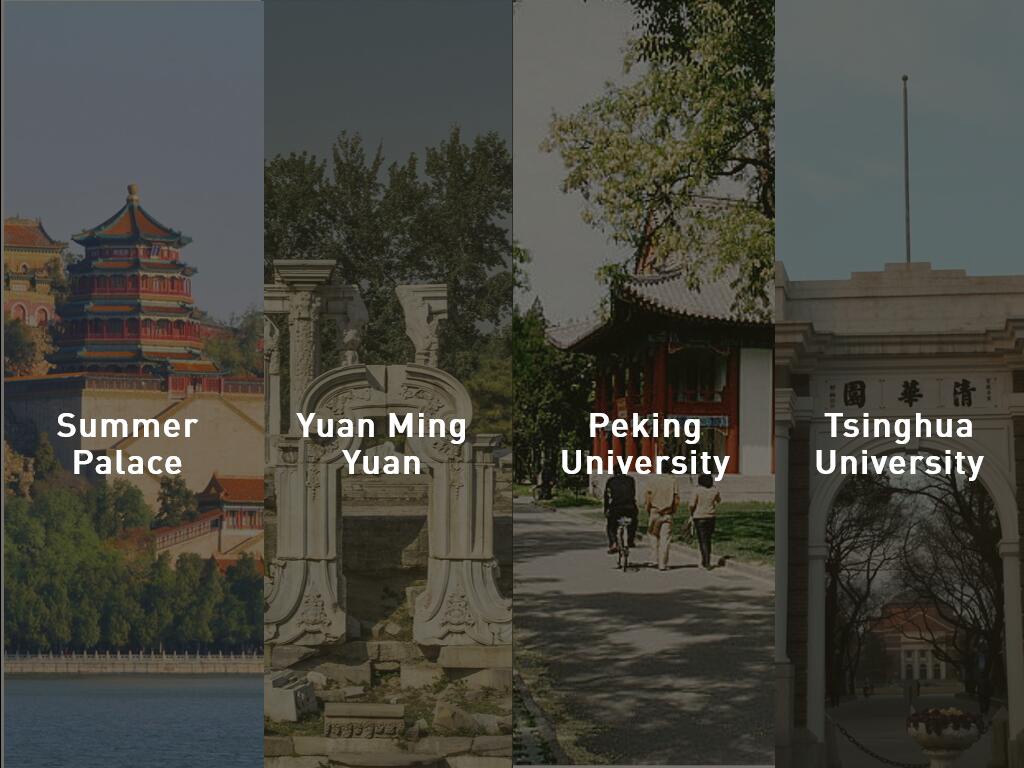
The Summer Palace used to be the imperial garden in the Qing Dynasty imitating the West Lake in Hangzhou. It is well preserved showcasing the art of Chinese gardens.
The Old Summer Palace was another imperial garden in the Qing Dynasty destroyed in war. Nowadays, the ruins of the Old Summer Palace still show the charm of the imperial garden.
Peking University, named Imperial University of Peking in the Qing Dynasty, is the first university in China indicating the beginning of Chinese modern higher education. Many talents are cultivated in this university.
Tsinghua University is one of the oldest universities in China based on an imperial garden. Not only can you experience the culture of Chinese universities here but also appreciate the charms of an imperial garden.
Day 4

Xiangshan Park boasts beautiful natural scenery and ancient style architecture. Over 5800 ancient trees are planted here occupying one fourth of the total number of ancient trees in urban Beijing. Red leaves as scenery is the most attractive for tourists.
Bird’s Nest is another name of the National Stadium due to its nest shape. It was the main venue during the Summer Olympic Games in 2008 and attracted world-wide attention. Now, it is one of the landmarks of Beijing
Water Cube is another landmark of the Summer Olympic Games in 2008. Aquatic sport competitions were held here.
Day 5
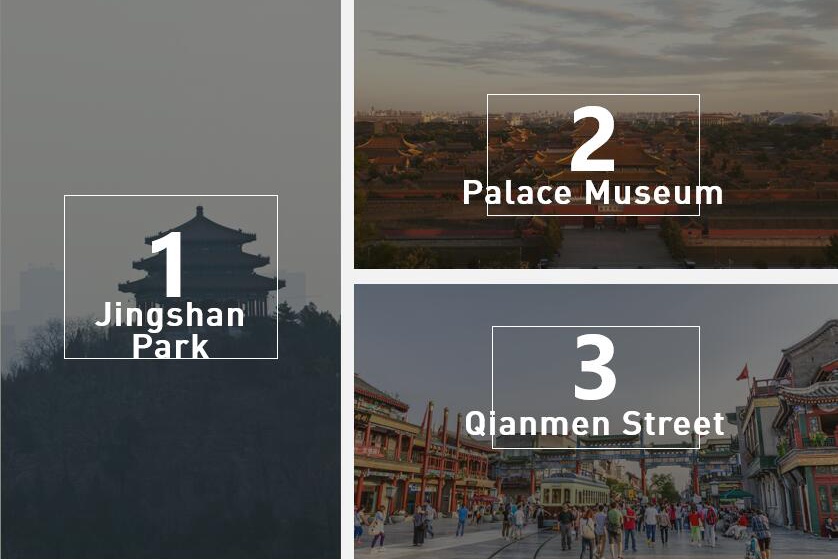
Jingshan Park is situated on the axis wire of old Beijing and occupies a high position. The whole Forbidden City can be seen from the top of the park.
Established in 1925, the Palace Museum is the largest ancient art museum based on the palace of the Ming and Qing dynasties. You can appreciate the treasures collected by the royal family. It is worthy to spend a whole day to visit.
Qianmen Street is a bustling shopping street along the axis wire of the Forbidden City and has been around since the Ming dynasty. Most of Beijing time-honored shops gather here providing an insight to authentic Beijing culture.
Day 6
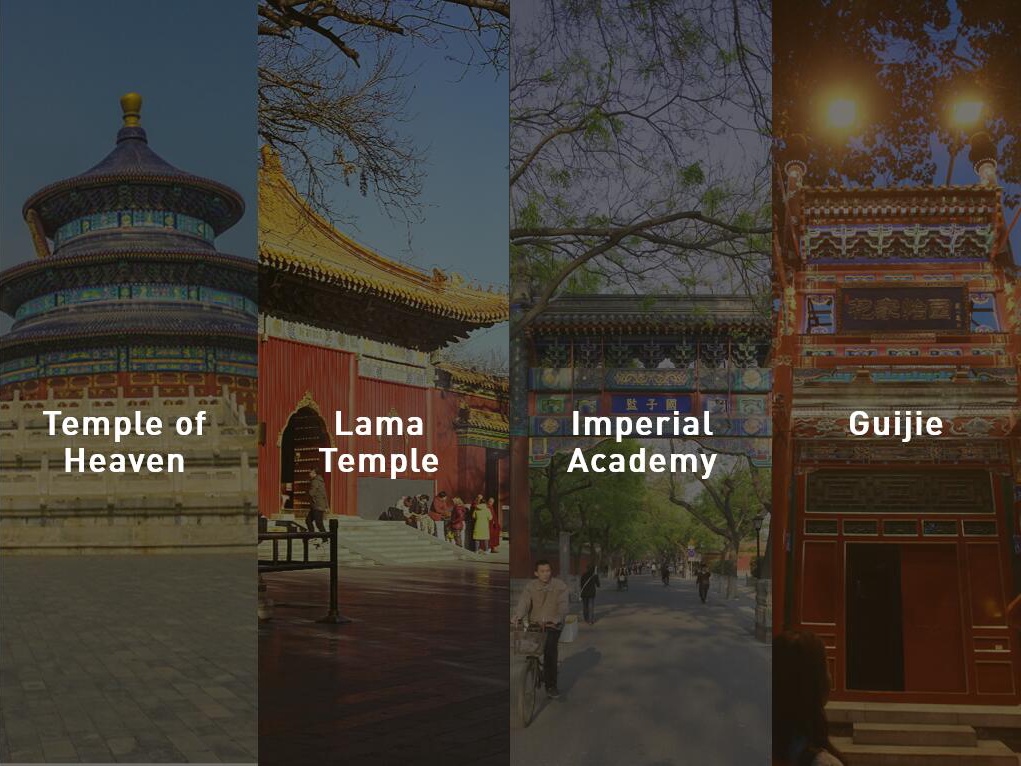
The Temple of Heaven was built to host heaven worship in the Qing dynasty. It was listed as a World Cultural Heritage. It’s an AAAAA scenic spot where you can learn the Qing culture.
The Lama Temple built in the Qing dynasty is a Tibetan Buddhism temple high with prestige. Various exquisite Buddhist sculptures and status can be seen here.
The Imperial Academy, named Guozijian in Chinese, was the highest college and education institution during the Ming and Qing dynasties. The Confucius Temple is located in Guozijian. You can experience Confucian culture here.
Guijie is famous for all kinds of restaurants serving palatable snacks and cuisines showcasing the charming of Chinese food culture.



